LiFePO4 battery is a subtype of lithium-ion batteries that have gradually become everyone's choice due to their long lifespan, safe nature, and high efficiency. You can find these rechargeable batteries in backup power systems, electric vehicles, off-grid solar generators, and many portable devices.
LFP or lithium iron phosphate batteries are ideal for powering low to high-power-consuming home appliances, electric motors, and more. Jackery Explorer 2000 Plus Portable Power Station has a LiFePO4 battery that can provide safe and stable electricity to devices in tiny homes, large off-grid houses, and RVs.
What Is A LiFePO4 Battery
LiFePO4 (or lithium iron phosphate) batteries have several advantages over other lead-acid battery types. But what is a LiFePO4 battery? It is a battery comprising four main components: a positive electrode, a negative electrode, an electrolyte, and lithium iron phosphate (LFP).
Here's a table representing the specification of a LiFePO4 battery cell.
|
Cell Specification |
LiFePO4 battery |
|
Nominal voltages(v/cell) |
3.20-3.30V |
|
Working voltage(v/cell) |
3.0-3.20V |
|
Energy density |
220Wh/L 90-160Wh/kg |
|
Charge C-rate range |
0.5-1.5C 1C typical |
|
Discharge C-rate |
2-10C |
|
Minimum discharge voltage |
2.5V |
|
Maximum charge voltage |
3.65V |
|
Cycle life(1C) |
≥ 2000 (according to realistic situations) |
|
Working temperature range |
-20 ~75 ℃ -4~167 ℉ |
|
Thermal runaway temperature |
≥ 500℃ |
LiFePO4 Battery Features: Why It Is A Better Choice
Thanks to their outstanding features, LiFePO4 batteries outperform technologies like AGM, lead-acid, and more. Here we'll dig deep into the main features of LFP batteries that make them a favorable choice for various applications.
Lifespan
Unlike other lead-acid batteries, LiFePO4 has a longer lifespan. They can charge and discharge between 2000 to 4000 times before losing 30% of their original capacity. Advanced options like Jackery Explorer 2000 Plus Portable Power Station offer 4000 life cycles before reaching 70% capacity.
Temperature Range
LiFePO4 batteries can efficiently operate in hot and cold temperatures. Their performance does not degrade when there are temperature fluctuations. Thus, they are safer and do not go through permanent damage.
Energy Density
LiFePO4 batteries generally have a higher energy density than lead-acid batteries but a lower energy density than lithium-ion batteries. This means LFP batteries can store more power in less space. In addition, they are smaller and lighter, making them a go-to option for electric vehicles and portable power stations.
Safety
LiFePO4 offers excellent protection against thermal runaway and overheating. They have a much lower risk of explosion or catching fire. What differentiates LiFePO4 battery from others is that it can be safely stored and operated in enclosed spaces like apartments, garages, and sheds.
Self-Discharge
Lithium iron phosphate or LFP batteries have a low self-discharge rate, meaning they do not lose the stored charge when kept ideal.
Compatibility
As these batteries are safe and reliable power solutions, LiFePO4 solar generators and power stations can power all home appliances. But how to charge the LiFePO4 battery? You can combine the power stations with solar panels to recharge them and receive endless power supply.
Cost
Even though the initial cost of LiFePO4 battery is high, it is cost-effective in the long run. They store more energy and can supply electricity for longer, making them affordable.

LiFePO4 Battery Pros and Cons
LiFePO4 batteries are popular for solar applications due to their long life cycle, low energy density, and low self-discharge rates. They are ideal for off-grid or backup power systems as they are compatible with solar panels.
Pros
- LiFePO4 batteries have extremely stable chemistry and a strong safety profile.
- They are non-toxic, non-contaminating, and do not contain any rare earth metals.
- These batteries remain cool at high temperatures and can withstand extreme weather conditions.
- They are a popular choice for portable power stations due to their small, lightweight size and stability at low cost and high temperatures.
Cons
- They have a low nominal voltage that leads to energy reduction.
- Sometimes the batteries do not perform well at low temperatures and require more protection.
LiFePO4 Battery Vs. Other Batteries
LiFePO4 and lithium-ion are the two most popular solar generators and power station batteries. One thing that differentiates the two is their lifespan. LiFePO4 has a lifespan of 2000 to 6000 cycles, whereas lithium-ion batteries have 800-1000 cycles.
|
|
LiFePO4 Battery |
Lithium-Ion Battery |
|
Chemistry |
Lithium, iron, and phosphate |
Metallic lithium and cathode materials, such as nickel, manganese, and cobalt |
|
Energy Level (Density) |
Lower |
Higher |
|
Safety |
Highly Safe |
Safe |
|
Charging & Discharging |
The self-discharge rate is around 3% per month |
The self-discharge rate is about 5% per month |
|
Lifespan |
2000-6000 life cycles |
800-1000 life cycles |
|
Temperature |
-4°F (-20°C) to 140°F (60°C) |
32°F (or 0°C) to 113°F (or 45°C) |
|
Voltage |
Lower voltage |
Higher voltage |
|
Weight |
Heavier |
Lighter |
|
Warranty |
Depends on the manufacturer. |
Depends on the manufacturer. |
|
Applications |
EVs, solar batteries, recreational vehicles, and more. |
Phones, battery backups, and other small rechargeable devices. |
LiFePO4 batteries differ from others, like gel, AGM, and flooded lead-acid. Let's briefly talk about these batteries below.
- Lead-Acid Batteries:Although affordable, these batteries require constant maintenance and cost you more in the long run.
- Gel Batteries: These batteries do not require frequent recharging. However, their charging process is relatively slow.
- AGM Batteries: These batteries are at high risk of damage when the discharge crosses 50% of battery capacity.
The below table reveals the lifespans of different battery types available on the market.
|
Battery Type |
Life Cycles |
|
Flooded Lead-Acid |
500 (1-2 years) |
|
AGM |
500-1200 (at least 2 years) |
|
Gel |
750 (2-3 years of daily usage) |
|
LFP or LiFePO4 (Lithium-ion) |
Over 4000 (10 years daily) |
One feature of LFP batteries is that they can be discharged entirely without permanent damage.
|
SoC (State of Charge) 12V FLA & SLA |
Flooded Lead Acid (FLA) |
AGM (SLA) |
Ranges & Warnings for all 12V Deep Cycle Batteries |
State of Charge 12V LiFePO4 |
LiFePO4 (LFP) |
|
100% |
12.7 |
13.0 |
Cycling in this zone will ensure a reasonable life expectancy. Depth of Discharge = 50% for FLA & SLA and 80% for LiFePO4 |
100% |
14.4 |
|
90% |
12.5 |
12.75 |
100% |
13.6 |
|
|
80% |
12.42 |
12.5 |
99% |
13.4 |
|
|
70% |
12.32 |
12.3 |
90% |
13.3 |
|
|
60% |
12.20 |
12.15 |
70% |
13.2 |
|
|
50% (DoD) |
12.06 |
12.05 |
40% |
13.1 |
|
|
40% |
11.9 |
11.95 |
30% |
13.0 |
|
|
30% |
11.75 |
11.81 |
20% (DoD) |
12.9 |
|
|
20% |
11.58 |
11.66 |
Occasionally this zone is okay. However, too much will shorten life. |
17% |
12.8 |
|
10% |
11.31 |
11.51 |
14% |
12.5 |
|
|
0% |
10.5 |
10.5 |
Dropping into this zone will permanently damage the battery. |
9% |
12.0 |
|
|
0% |
10.0 |
|||
LiFePO4 Battery Applications
The innovative LiFePO4 battery offers outstanding performance. They are versatile power sources used in various products and applications.
- Electric Vehicles: LiFePO4 is widely used in electric vehicles, motorcycles, scooters, buses, and cars. These batteries have a long lifespan and high energy density, making them ideal for EVs.
- Portable Devices:Many portable electronic devices, such as laptops, tablets, and digital cameras, use LiFePO4 batteries. Jackery Explorer 2000 Plus Power Station is a great example that lets you charge devices using clean and safe energy.
- Medical Devices:Hearing aids and pacemakers are some sensitive medical devices that feature LiFePO4 batteries, as they offer superior safety and reliability.
Jackery Portable Power Station with LiFePO4 Battery
Jackery is a renowned solar brand manufacturing battery-powered solar generators. These solar power generators mainly consist of lithium-ion and LiFePO4 batteries.
One popular solar generator with a NMC battery is Jackery Solar Generator 3000 Pro. It has a battery capacity of 3024Wh and can charge 99% of your home or outdoor appliances.
Alternatively, Jackery Solar Generator 2000 Plus comes with an expandable LiFePO4 battery of 2042.8Wh. Here we compare Jackery Explorer 3000 Pro with Jackery Explorer 2000 Plus
|
|
Explorer 3000 Pro |
Explorer 2000 Plus |
|
Capacity |
3024Wh |
2042.8Wh |
|
Cell Chemistry |
NMC |
LiFePO4 |
|
Recharging Time |
6 x SolarSaga 200W Solar Panel: 3.5 Hours 4 x SolarSaga 200W Solar Panel: 5-6 Hours 2 x SolarSaga 200W Solar Panel: 9-10 Hours 1 x SolarSaga 200W Solar Panel: 18-19 Hours AC Adapter: 2.4H Car Adapter (12V): 35H |
6 x SolarSaga 200W Solar Panel: 2H 4 x SolarSaga 200W Solar Panel: 3.8H 3 x SolarSaga 200W Solar Panel: 4.8H 2 x SolarSaga 200W Solar Panel: 7H 1 x SolarSaga 200W Solar Panel: 14H AC Adapter: 2H Car Adapter (12V): 25H |
|
Lifespan (Cycle Life) |
2000 cycles to 70%+ capacity |
4000 cycles to 70%+ capacity |
|
Performance |
Charge 99% of home appliances |
Charge 99% of home appliances |
|
Power Output |
3000W (6000W Peak) Output |
Maximum 6000W power output |
|
Operating Temperature |
-4~104 ℉(-20~40 °C) |
Charge Temperature: 0~45°C (32~113 °F) Discharge Temperature:- 10~45°C (14~113°F) |
|
Appliances |
Microwave (1050W): 2.4 H Kettle (850W): 3.0 H Coffee Maker (550W): 4.6 H Electric Oven (800W): 3.2 H Portable Air Conditioner (1150W): 2.2 H Electric Pressure Cooker (1080W): 2.3 H |
Microwave (1050W): 1.6 H Kettle (850W): 2 H Coffee Maker (550W): 3.1 H Electric Oven (800W): 2.1 H Portable Air Conditioner (1150W): 1.5 H Electric Pressure Cooker (1080W): 1.6 H
|
Jackery Explorer 2000 Plus Power Station
Featuring an expandable LiFePO4 battery, Jackery Explorer 2000 Plus Portable Power Station can charge 99% of your home appliances. With the help of Jackery Battery Pack 2000 Plus, you can expand from 2kWh to 24kWh.
The outstanding LiFePO4 battery powers heavy-duty devices up to 6000 watts. You can charge the battery using 6*Jackery SolarSaga 200W Solar Panels in less than 2 hours.

Customer Review
"The Jackery Explorer 2000 Plus Power Station is a true game-changer portable power. Its exceptional expandability, ultra-fast charging, and smart app control elevate it above the competition. Connecting two units in parallel allowed me to expand the capacity to a whopping 24kWh, providing me with an abundance of power for all my indoor and outdoor needs." — Jake D.
|
Series |
Capacity |
Cell Chemistry |
Recharging Time |
Ports |
Appliances |
|
Explorer 2000 Plus |
45.6Ah/44.8V (2042.8Wh) |
LFP (LiFePO4 battery) |
AC Adapter: 2H Car Adapter (12V): 25H 6 x SolarSaga 200W Solar Panel: 2H 4 x SolarSaga 200W Solar Panel: 3.8H 3 x SolarSaga 200W Solar Panel: 4.8H 2 x SolarSaga 200W Solar Panel: 7H 1 x SolarSaga 200W Solar Panel: 14H |
AC Output (x5): AC Output (×4): 120V~ 60Hz, 20A Max AC Output (×1):120V~ 60Hz, 25A Max, AC Total Output,3000W Max, 6000W surge peak Car Port (x1): 12V⎓10A DC Input: 11-17.5V, 8A Max, Double to 8A Max; 17.5V-60V, 12A Max, Double to 24A/1400W Max AC Input: 120V, 60Hz, 15A Max (x2) USB-C Output: 100W Max, (5V, 9V, 12V, 15V, 20V up to 5A) (x2) USB-A Output: Quick Charge 3.0, 18W Max |
Blender (300W): 5.7H Washing Machine (1150W): 1.5H Toaster (850W): 2H Sump Pump (800W): 2.2H LED TV (120W): 14.4H |
LiFePO4 Battery FAQs
What size of power station should I need for my home?
Jackery Explorer 2000 Plus Portable Power Station with a LiFePO4 battery of 2042.8Wh can efficiently charge 99% of your home appliances.
Working Time = Capacity in Wh × 0.85 / Operating wattage of the home devices
Working Time = 2042.8Wh × 0.85 / 1000W = 1.7H
In the above example, we assume you're simultaneously using 1000 watts of appliances.
If you want to power appliances that consume more than 2000 watts, consider adding Jackery Battery Pack 2000 Plus to the Explorer 2000 Plus.
How long does a LiFePO4 battery last?
Roughly speaking, the lifespan of a LiFePO4 battery will depend on its quality and type. You can expect anywhere from 5 to more than 10 years of battery lifespan from LiFePO4. Jackery Explorer 2000 Plus Power Station can last for years. It has over 4000 cycles, after which the battery capacity reduces to 70%.
Does a LiFePO4 battery take a special charger?
Yes, LiFePO4 batteries need specific chargers compatible with these types of cells. Jackery Explorer 2000 Plus Portable Power Station can be recharged using an AC adapter, car adapter (12V), and Jackery SolarSaga 200W Solar Panels.
Final Thoughts
LiFePO4 are the safest batteries available as they have stable chemical chemistry. Jackery is a reputable manufacturer with a proven track record of building high-quality and safe LiFePO4 battery-powered solar generators.
Investing in Jackery Solar Generator 2000 Plus can help you charge 99% of your home appliances and reduce high electricity bills. In addition to LiFePO4 batteries, Jackery sells reliable and safe lithium-ion power stations at affordable pricing.

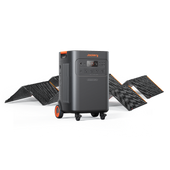











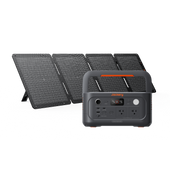





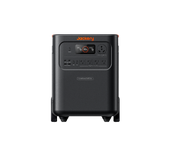
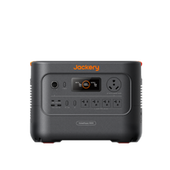





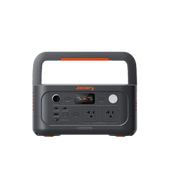





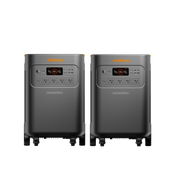
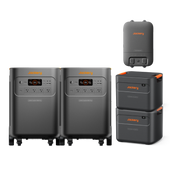





![[Add - on] Jackery Manual Transfer Switch for Explorer 5000 Plus - Jackery](http://www.jackery.com/cdn/shop/files/add-on-jackery-manual-transfer-switch-for-explorer-5000-plus-9017324.png?v=1754016782&width=170)
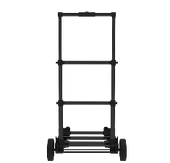
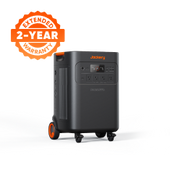
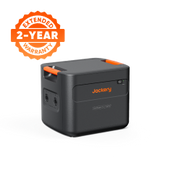
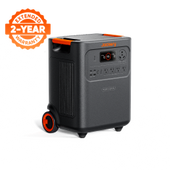
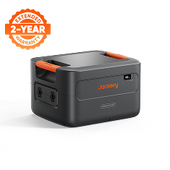
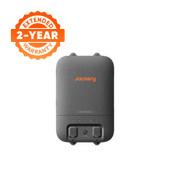



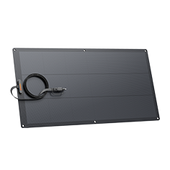
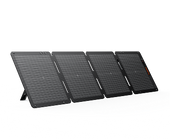




















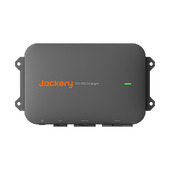




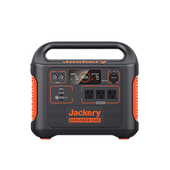







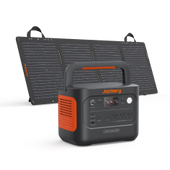
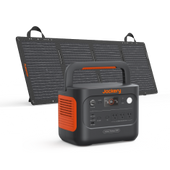





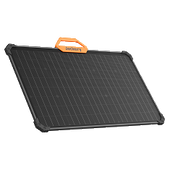
















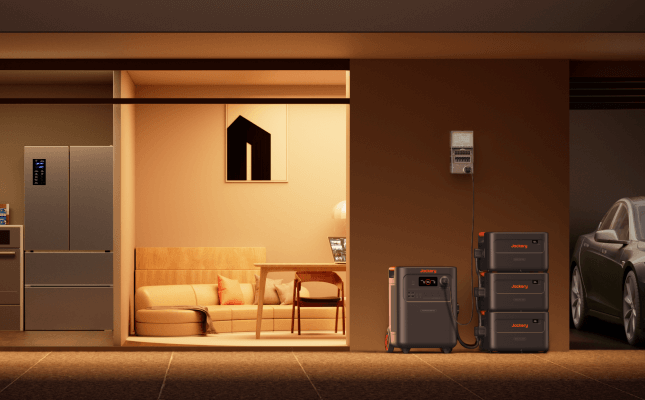


















![What Is A LiFePO4 Battery [Detailed Explain]](http://www.jackery.com/cdn/shop/articles/what-is-a-lifepo4-battery-detailed-explain-3045849.jpg?v=1754017469)





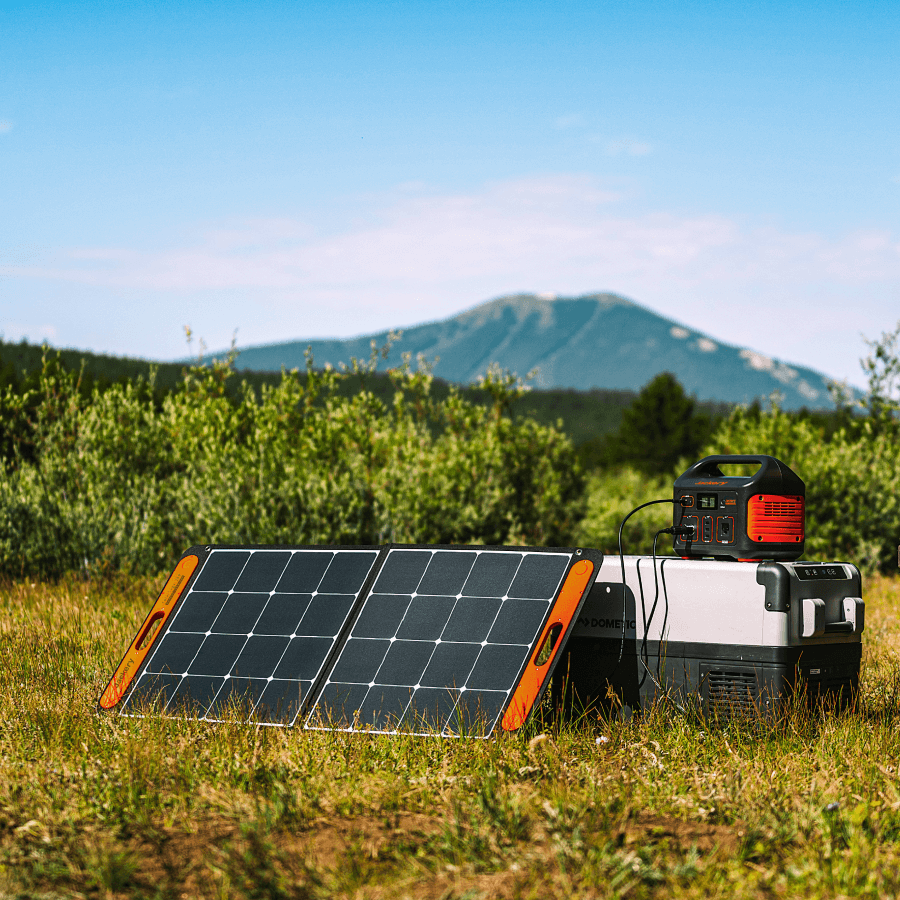
Can the lifePO4 batteries replace the batteries in an RV without having to change or replace anything in the electrical system
Leave a comment